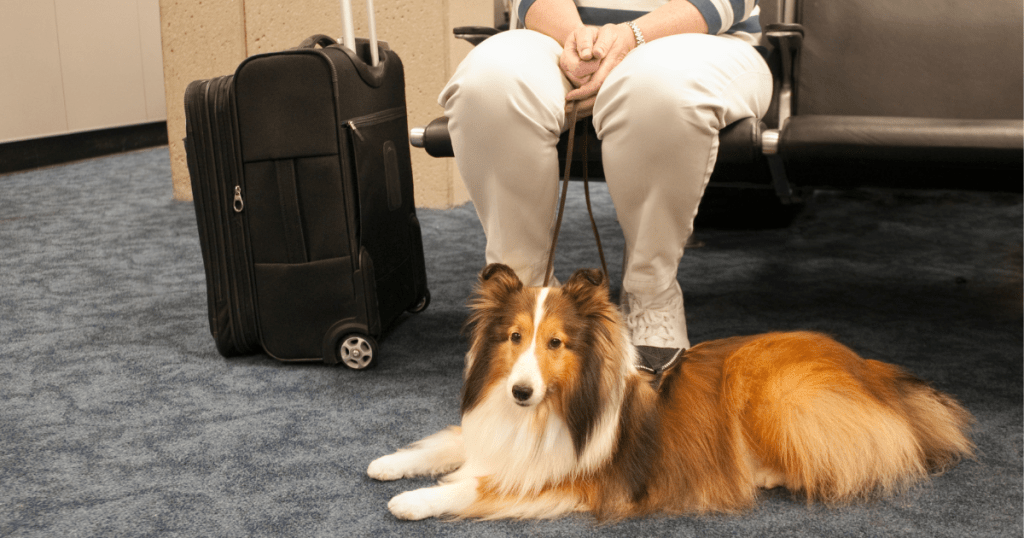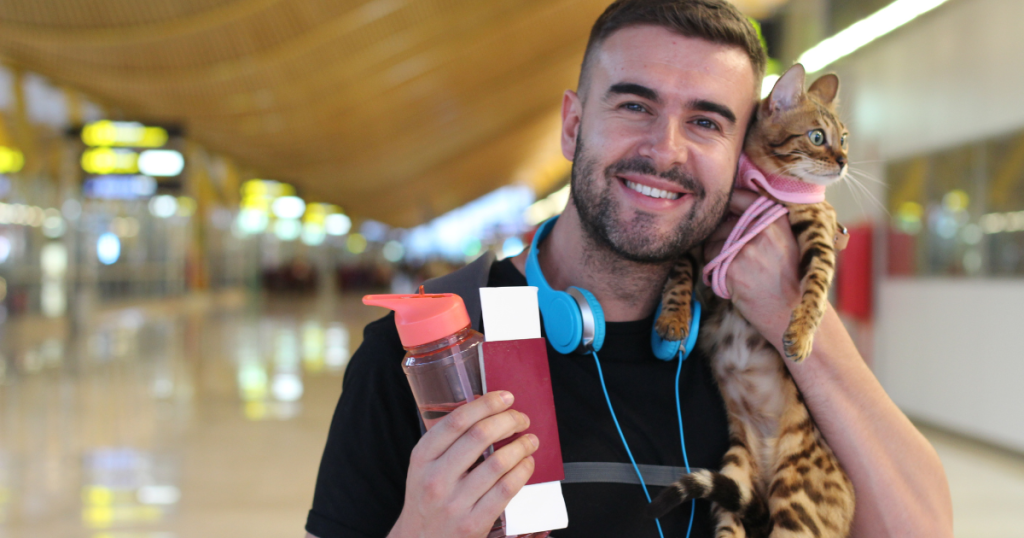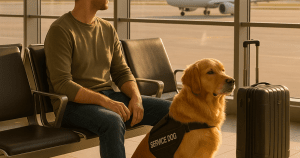Flying with an emotional support animal has always been about more than logistics. For many, it is about calm during turbulence, steady companionship in a crowded cabin, and reassurance when everything else feels overwhelming. In 2025, the rules are more complex than ever. Some international airlines continue to recognize emotional support animals under specific conditions, while others classify them as pets, subjecting them to stricter limitations. Knowing the difference can save heartache and ensure a smoother journey.
The Regulatory Landscape

U.S. DOT rule change of 2020
In 2020 the Department of Transportation gave airlines permission to treat emotional support animals as pets instead of service animals. This change ended the special protections ESAs once had. Many people feared travel with ESAs would end completely, but it did not. Airlines were free to set their own rules, leading to different standards depending on the carrier and route.
Air Carrier Access Act and service animal protections
The Air Carrier Access Act continues to protect trained service dogs, including psychiatric service dogs. These animals are recognized for tasks that help their handlers. Emotional support animals are no longer included under this law, so owners must now follow airline-specific rules.
International and national rules
Outside the U.S., the picture varies. Some countries still accept ESAs with proper documentation, while others follow the U.S. approach and classify them as pets. Latin American airlines are often more flexible, but requirements differ between nations. Travelers must check both the airline’s and the destination’s laws.
Why ESA privileges were reduced
Reports of fraud and disruptive animals played a big role in policy changes. Cases of unusual animals in cabins and aggressive behavior caused airlines to tighten rules. Safety, allergy concerns, and liability led carriers to place ESAs under pet rules. This shift was meant to restore order while still giving genuine owners a path forward under clearer conditions.
Criteria for “ESA-Friendly International” Airlines

What ESA approval usually means
When an airline is ESA-friendly, it typically allows dogs or cats to fly in the cabin. Some waive fees, while others apply pet rates. Documentation is always required, often including a letter from a licensed mental health professional. Unlike pets, ESAs may not need to remain inside carriers at all times, though behavior rules remain strict.
Typical restrictions
Restrictions vary but share common threads.
- Weight limits: Most airlines cap ESA weight at around 12 kg or 26 lbs.
- Carrier dimensions: The carrier must fit beneath the seat or meet exact size requirements.
- Species allowed: Typically only dogs and cats are permitted, while birds, rabbits, and exotic animals are excluded.
- Route exclusions: ESA travel is often restricted on flights bound for nations with strict quarantine laws or heightened biosecurity protocols.
These points show the main rules most airlines share, while reminding travelers that each carrier has its own specific conditions that can affect ESA travel.
Documentation needed
A valid ESA letter is usually required, and it should be issued within the last 12 months. Health certificates and vaccination records are also necessary to prove your animal is safe for travel.
- ESA letter: Must be recent and from a licensed mental health professional.
- Health certificate: Shows that your animal is healthy and fit to fly.
- Vaccinations: Proof of rabies and other vaccines may be requested.
- Behavior declaration: Some airlines want confirmation that your animal will not bite, bark excessively, or cause disruptions.
These documents help airlines trust that your animal can travel safely and responsibly.
Notice deadlines
Airlines require advance notice, typically 48 to 96 hours before departure. Forms must be submitted through official channels, not simply carried to the gate. Missing this deadline can result in an ESA being denied boarding or classified under standard pet travel rules.
Airlines That Still (Partially) Allow ESAs on International / Cross-Border Flights
LATAM Airlines
LATAM is one of the largest carriers in Latin America that still allows ESAs on certain flights.
- Routes: Flights to and from Mexico and Colombia, plus domestic flights within Colombia.
- Weight limit: Animals must be 12 kg or less and able to fit under the seat or remain comfortably in the cabin.
- Special requirements: Dogs must wear an anti-bite muzzle.
- Documents: Valid ESA letter and health paperwork are required.
- Advance notice: Requests should be submitted before travel, and passengers are encouraged to confirm details directly with LATAM well ahead of booking.
This combination of conditions makes LATAM a practical choice for travelers who still want ESA support in the cabin.
Volaris
Volaris is one of the few low-cost carriers that still accepts ESAs.
- Eligible routes: Domestic flights within Mexico and select regional routes across Central and South America.
- Weight limit: The combined weight of the animal and carrier must not exceed 26 pounds.
- In-cabin rules: Animals are not always required to remain inside a carrier but must be leashed or harnessed.
- Documents required: A valid ESA letter and a current health certificate are mandatory.
- Behavior expectations: Animals that are disruptive may be denied boarding, so calm behavior is essential.
These conditions make Volaris a workable choice for ESA owners traveling within Mexico and nearby regions.
Aeroméxico
Aeroméxico allows ESA travel, but with specific requirements.
- Eligible animals: Only dogs and cats are accepted.
- Weight limit: Maximum of 26 pounds, which includes the animal and any carrier.
- Routes: Travel is often approved across the Americas, while longer international routes may face restrictions.
- Documents: A signed letter from a licensed mental health professional is required.
- In-cabin rules: Small animals may sit on a passenger’s lap, while larger ones must stay under the seat.
- Seating adjustments: The airline may change seats to separate ESA owners from passengers with allergies.
These guidelines make Aeroméxico one of the few airlines still offering ESA accommodations, though careful preparation is essential.
Major U.S. Carriers: ESAs Treated as Pets, Not Service Animals
American Airlines
American Airlines does not recognize emotional support animals. Their official stance is that “emotional support animals of any kind cannot be accepted.” ESAs must travel under standard pet policies, either in the cabin (subject to weight and carrier size limits) or as cargo. International routes impose additional restrictions, particularly regarding quarantine laws.
Delta Air Lines
Delta is direct in its language, stating that “emotional support animals are not recognized as service animals.” Passengers may only travel with ESAs under pet guidelines. Cabin space is limited, and fees apply to both domestic and international routes. Larger animals must travel as cargo.
United Airlines
United Airlines classifies ESAs as pets. Its official policy distinguishes service animals from therapy or emotional support animals, which must adhere to in-cabin pet program rules. Carrier size, fees, and route restrictions all apply. For long-haul international flights, space limitations can make ESA travel particularly difficult.
Southwest Airlines
Southwest once permitted ESAs but now follows standard pet rules. Only small cats and dogs may fly in the cabin, and they must remain in a carrier. International travel with animals is limited and requires careful verification before booking.
Alaska Airlines
Alaska Airlines enforces clear distinctions. ESAs are treated as pets and are permitted only if they meet in-cabin requirements. For cross-border travel, restrictions apply when flying to certain destinations, including Mexico. Advance booking is critical as Alaska caps the number of animals per flight.
JetBlue
JetBlue accepts ESAs only as pets. Their pet program permits small cats and dogs in carriers that fit under the seat. Fees apply both domestically and internationally. Behavioral expectations are strict, with no tolerance for disruptive animals.
Hawaiian Airlines
Hawaiian Airlines has its own set of challenges. ESAs are treated as pets, with unique health and quarantine requirements when traveling to or from Hawaii. For international routes, these rules intensify, and owners must research destination-specific laws.
How to Check & Prepare for Your ESA on an International Flight

Step-by-step checklist
- Confirm the airline’s ESA or pet policy on official websites
- Review route-specific rules, especially for countries with quarantine laws
- Submit all documentation in advance, including ESA letters and health certificates
- Reserve animal slots early, as airlines limit the number of pets in cabins
- Train your animal for calm behavior and label carriers with contact information
Sample documentation templates & tips
An effective ESA letter includes the professional’s license, contact information, and a clear statement of medical necessity. Health certificates should list vaccination records and recent vet visits. Always carry multiple copies, both digital and printed.
Dealing with refusals or gate denials — your rights & appeal paths
If denied boarding, remain calm and request to speak with a supervisor. Present documentation again and ask about alternatives, such as traveling under pet policies. Appeals can be filed with the airline’s accessibility office or the DOT for U.S. flights.
Alternative options: cargo, animal shippers, chartered flights
When cabin travel is not possible, consider cargo transport or professional animal shippers. Some owners choose chartered flights for guaranteed comfort, though costs can be high. Each option comes with trade-offs of price, convenience, and animal welfare.
Common Myths & Mistakes
Myth: “If I have an ESA letter, I’m automatically allowed to bring the animal free”
This is no longer true in most cases. ESA letters may help on certain international airlines, but U.S. carriers treat ESAs as pets. Expect fees and restrictions.
Myth: “Airlines can’t ask medical or behavior questions”
Airlines cannot ask about your diagnosis, but they can require proof of vaccinations, behavior declarations, and compliance with rules. Disruptive animals can be denied regardless of documentation.
Mistakes travelers make
- Missed deadlines or outdated paperwork: Submitting documents late or carrying an expired ESA letter almost always leads to denials.
- Carrier size violations: Oversized carriers that do not fit under the seat can result in denied boarding.
- Animal behavior issues: Signs of aggression, loud barking, or visible anxiety may cause staff to refuse travel.
- Health or vaccine gaps: Missing rabies shots or lacking a recent health certificate can stop your trip before it starts.
- Preparation is key: Reviewing airline rules, updating documents, and practicing with the carrier early helps prevent problems on travel day.
Flying Internationally With Emotional Support Animals
In 2025, only a handful of airlines still accept ESAs on international routes, with LATAM, Volaris, and Aeroméxico standing out as the most consistent options, though each applies strict weight, species, and route-specific limits. Major U.S. carriers no longer provide ESA privileges and instead classify them as pets. Because policies can change without notice, it is vital to confirm requirements for each flight and destination and prepare all documents in advance.
With thoughtful planning, early communication with airlines, and backup travel strategies, flying internationally with an ESA remains possible, and as a community of ESA advocates we encourage readers to approach their journeys with confidence, preparation, and peace of mind.













